In the discussion around sustainable fashion we often overlook one of the most impactful phases of a garment’s lifespan: cleaning and care. Cleaning and care also happens to be one of the phases in which we as consumers have the most control. How we wash and care for our clothes has a significant impact on the environment. It also has some direct health effects on you, of which you might not be aware. It’s much easier to have a sustainable laundry day than you might think.
A big key to sustainable laundry is simple: wash less often. If you’re wearing natural fibers, you already have a head start here. Natural fiber clothing is less prone to bacteria growth. This means the clothing gets cleaner in the wash and you can usually wear it more than once before it grows odor causing bacteria and you need to toss it in the laundry again. Also, when you do launder natural fiber clothing it doesn’t release harmful products into the environment in the form of plastic microfibers, unlike its synthetic counterparts.
Check out these quick sustainable laundry tips below. If you’re interested in finding out more, check out the book Unraveling Threads: How to Have a Sustainable Wardrobe in the Age of Plastic Fabric.
Wash Laundry In Cold Water
Washing your laundry in cold water will not only save energy, it will also help your clothing last longer. About 90% of the energy used for a load of laundry goes to heating the water. Only use hot water if absolutely necessary to sanitize a load of laundry.
If you have concerns about bacteria and sanitizing every load, turn to vinegar. White distilled vinegar is a powerhouse when it comes to laundry and cleaning your washing machine. White distilled vinegar can fight odors from mildew to cigarettes and tackle tough underarm stains. It will also help pet hair from sticking to clothes and break up excess detergent to keep dark clothing darker and white clothing brighter. Vinegar is also a natural fabric softener. It’s also a powerful cleaning agent for your clothing and washing machine.
Running two cups of vinegar in an empty machine on a hot cycle will clean out detergent buildup, mold and mildew, and hard water deposits. Doing this trick every three to four months will keep your machine clean and running more efficiently.
Make sure to check with your washing machine manual before using vinegar, as some manufacturers believe vinegar can be corrosive to certain rubber hoses and o-rings.
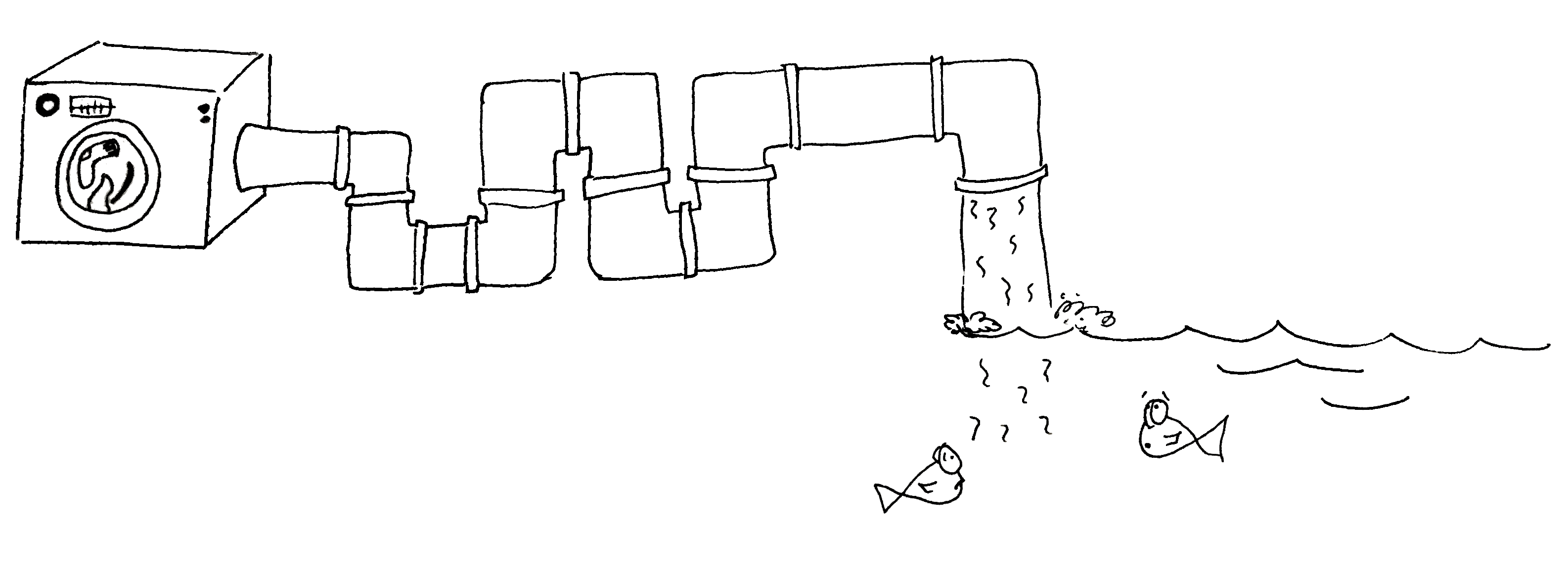
Reduce the Amount of Plastic Microfibers Released by Your Laundry
If you’re washing natural fiber clothing, you don’t need to worry about this. If you’re washing clothing made from polyester, acrylic, polyamide or nylon, spandex, lycra, or other plastic fibers then read on.
Synthetic clothing releases tiny bits of plastic during the laundry cycle. As the washing machine agitates clothing in order to separate the dirt and grime, tiny bits of fiber are also separated from the clothing. When microfibers are released from natural fiber clothing it isn’t an issue. The natural microfibers will decompose. But when microfibers are released from synthetic clothing, they create a significant disruption in the ecosystem.
Microfibers released from synthetic clothing (polyester, nylon or polyamide, acrylic, spandex, lycra) are tiny pieces of plastic that can find their way into all sorts of trouble. The tiny plastics are carried through wastewater into the sewage system and eventually find their way onto agricultural fields and waterways. From there, they venture on. Plastic microfibers have been found in our food, bottled water, and the greatest depths of the ocean – the Mariana Trench. Tiny bits will travel.
So how can you prevent plastic microfibers from leaving your laundry? Here are a few tips:
- use a special laundry bag that catches microfibers (such as the GUPPYFRIEND)
- use a liquid detergent (not powder or pellets)
- wash a full load of laundry rather than partial loads – this reduces the agitation experienced by the clothing
- wear natural fibers
Use a Liquid Biodegradable Detergent & Just Enough
Liquid detergents are less abrasive to clothing and are also more effective than powdered detergents when used in cold wash cycles. Your clothes will last longer, release fewer microfibers, and get a more thorough clean in a cold cycle. And a biodegradable detergent is, well, biodegradable.
Using more than the recommended amount of detergent can actually leave your clothing dirtier. Buildup of detergent on your clothing can trap odors and compromise the color and structure of the textile.
Know Your Dirt: Sustainable Laundry Stain Removal
If you know what that stain is on the front of your shirt (or the seat of your jeans) you can use much more eco-friendly (and you-friendly) alternatives to get it out. Before you reach for an all-purpose all-harsh stain remover, try some of these methods using supplies you probably already have at home:
Red Wine Stains – Table salt and/or White Wine. Red wine stains are best acted on as soon as possible. I’ve had consistent success in removing red wine stains by first diluting the red wine with a small amount of white wine, then pouring a healthy layer of salt on top of the stain area (really coat it with a thick layer). Then wait ten minutes and remove the salt by vacuuming (if the stain is on a flat surface like a rug or couch) or rinsing thoroughly with cold water. Repeat if necessary.
Blood Stains – Hydrogen Peroxide. Remember to use cold water rather than hot water to flush the stain (hot water will help the blood stain set in your clothing).
White Deodorant Marks – Just rub white deodorant marks lightly with a scrap of denim or a discreet corner of your jeans. This will lift the marks right off of your clothes.
Oil Based Makeup – Clear Dish Soap. I always buy a clear biodegradable dish soap for my kitchen use, because it doubles as a great spot remover for clothing. Oil-based makeup can be an especially tough stain to remove, but since dish soap is formulated to cut through grease, it’s practically made for the job. Start with just a tiny bit of soap on the stain, a little goes a long way here. Using too much soap on the stain can actually clog the fabric with soap and then you’ll spend more time flushing the soap out of your clothing. Gently work the soap into the stain, let sit a bit, then flush with cold water.
Oily Food Stains – Clear Dish Soap. Similar to oily makeup, oil from foods can be extremely stubborn. This is because oils repel water and respond best to another lipid (fatty solution). Dish soap is a bit of a mediator, in that it both dissolves in water and can dissolve fats. It’s the smoothtalker of the stain world.
Lipstick – Baby Wipes. Oddly enough, the super gentle baby wipe will remove a lipstick stain well. Make sure to rub the lipstick stain lightly to help the stain lift off rather than rub in. Depending on the formula of the lipstick, clear dish soap may also do the trick.
Coffee – Baking Soda. This works for coffee cups, carafes, and clothing. Sprinkle some baking soda onto the coffee stain. Then add a small amount of water. This will form a sort of paste. Gently rub the paste into the stain and flush thoroughly with cold water.
Grass – White Distilled Vinegar. Grass stains can best be tackled with white distilled vinegar. Soak the grass stain in 2 parts water + 1 part white distilled vinegar for 15 minutes. Dab the stain with a clean white rag, then toss the clothing in the laundry and use an enzyme based detergent.
For the sustainable one-stop-shop in stain removal, my personal favorite is the Stain Solution from The Laundress. It can tackle old and new stains, and I have personally used it to remove coffee, blood, pesto, red wine, and underarm stains and odors.
And with all washing methods, spot test the cleaning agent on a discreet corner first and always blot, never rub.
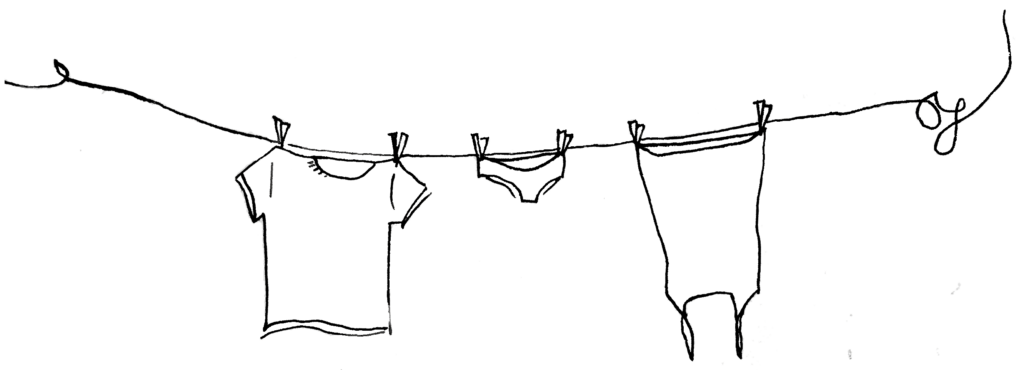
Line Dry Your Laundry
Hanging your clothes or laying them flat to air dry will not just cut back on your energy use, but will also extend the lifespan of your clothes. This is especially true for your jeans and any articles of clothing that have even a small amount of stretch.
Skip the Dry Cleaning
Conventional dry cleaning processes use harsh and toxic chemicals to treat your clothing. These chemicals don’t stay at the laundromat, they remain in your clothing and come home with you while also off-gassing in your car and home. Perc – one of the harshest chemicals used in dry cleaning – is also found in drinking wells and soil. Read more about the dangers of perc and dry cleaning here.
Grab Your Sustainable Laundry Supplies Here
If you don’t have the above supplies already at hand, I’ve linked them here for you.
Biodegradable Liquid Detergent
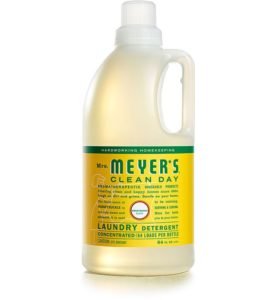
Mrs. Meyer’s Clean Day Laundry Detergent
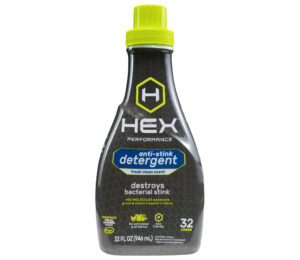
HEX Performance Biodegradable Laundry Detergent
Microfiber Catching Laundry Bag
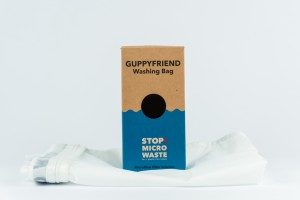
If you found this helpful and would like to know more, then check out the book Unraveling Threads. Where you’ll find more tips, facts, and figures (like the highly debated question: how often should I wash my jeans?) about how to have a sustainable wardrobe and keep it fresher with a more eco-friendly approach.
Happy laundry day!
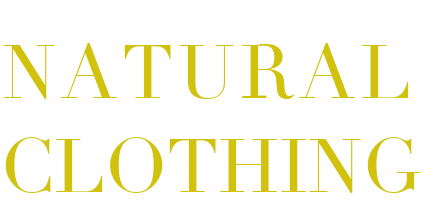

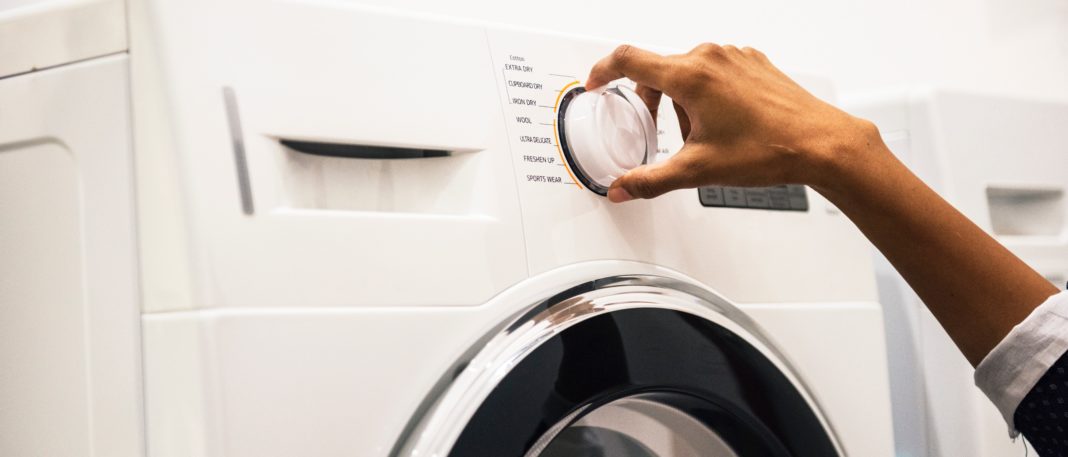
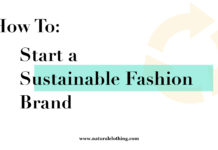





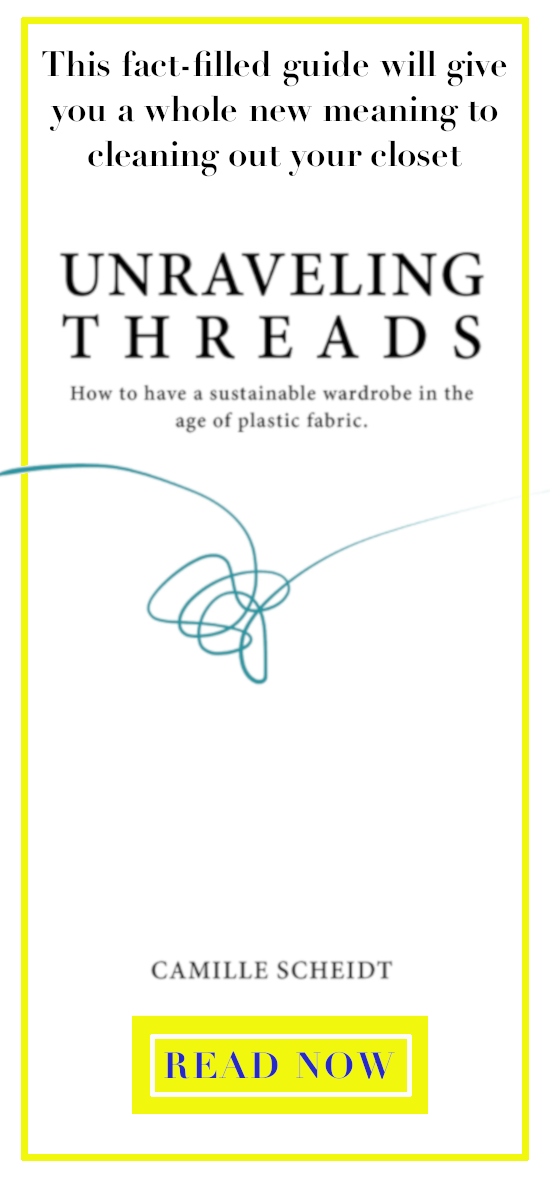




What a fantastic article! What about the impact of dryer sheets? A lot of people use these and it concerns me. We use a felt ball and it works well.
Keep adding to this site! So good!!!
Thanks, Erik! Absolutely – the felt reusable dryer balls are a great alternative to dryer sheets. A felt dryer ball provides the same benefits in reducing static cling as dryer sheets, without the waste and without introducing additional chemicals to your family’s routine. Thanks for the comment, I’ll add a more thorough comparison of the two to this article!